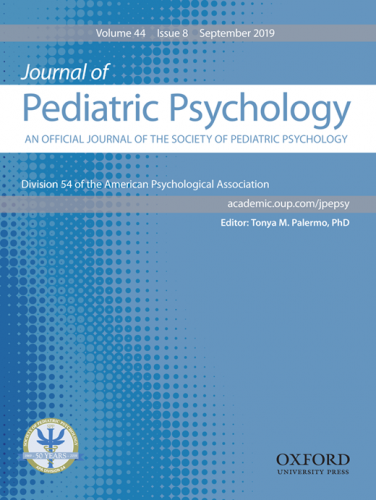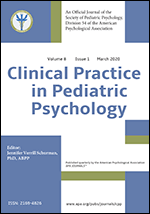Fact Sheet: Enuresis in Children and Adolescents
Enuresis involves the repeated voiding of urine during the day or at night into bed or clothes. Usually this is involuntary, but occasionally it may be intentional. To qualify for a diagnosis of enuresis, the voiding must occur at least twice per week for at least 3 consecutive months or else must cause clinically significant distress or impairment in social, academic, occupational or other important areas of functioning. The child must be at least five years of age or exhibit that level of developmental ability. The condition cannot be directly due to the physiological effects of a substance (e.g., diuretics) or a general medical condition. There are 3 subdivisions--nocturnal, diurnal, and combined nocturnal and diurnal with nocturnal being the most prevalent by a very wide margin.
Prevalence and Course
Current epidemiological range as high as 15% of six-year-old children for enuresis. These estimates decline to 2-3% of 10-year-old children, and continue to decline to near zero during productive adult years and then begin to increase with significantly advancing age. Although enuresis can impose social and psychological burdens (see below) on afflicted children and their families, it is, in itself, a relatively benign condition. It will resolve in almost all cases, even without treatment. A 15 percent spontaneous cure rate is well documented.
Health and Psychosocial Consequences
There are no significant health-related consequences of enuresis, although the presence of enuresis could be a marker for medical conditions such as urinary tract infections or vesicoureteral reflux. However, incontinence of any sort is a significant source of stress. In surveys of child reported stressors, only divorce and parental fights exceed incontinence. Other psychosocial consequences also result from the shaming, blaming and characterological attributions often directed at incontinent children in addition to an increased risk of child abuse.
Evidenced-based Assessment
There are no widely used evidence based assessment tools focused solely on enuresis. However, measures such as the Dysfunctional Voiding Scoring System allow for an objective assessment of enuresis and other co-morbid voiding and/or elimination symptoms. Most research focused on assessment has utilized instruments that incorporate enuresis based items into a larger constellation of items focused on broad psychosocial issues. As for enuresis itself, there are two primary domains of assessment, wet or dry days (or nights), and size of urine spot.
Evidence-based Interventions
Evidence-based treatment for enuresis involves use of the urine alarm, typically accompanied by other components such as a waking schedule and urine retention training. The success rate of alarm-based treatment is higher and its relapse rate lower than that of any other method. In addition to Kegel exercises and timed toilet visits, the urine alarm has also been shown to be beneficial for children with diurnal enuresis.
Medication
Once the standard treatment prescribed by medical providers both most commonly used medications for treatment of enuresis, imipramine and desmopressin, have fallen far out of favor because of their unpleasant and sometimes harmful side effects.
Cultural, Diversity, Demographic and Developmental Factors
The prevalence of enuresis appears to be consistent across races with differential rates for gender as indicated above. The impact of race on prevalence and course of enuresis has actually received little research-based attention and could be characterized as an important gap in knowledge. There is some speculation that diminished social resources may be correlated with elevated prevalence of enuresis. Developmental factors are important; urinary continence is correlated with development and therefore delays in development have a virtual isomorphic relationship with delays in its attainment. In fact, some of the most influential treatment based research on enuresis was done with adults with developmental delays.
Resources
- National enuresis society, www.peds.umn.edu/Centers/NES
- National kidney foundation, https://www.kidney.org/patients/bw
- National association for continence, https://www.nafc.org/bedwetting
Author: Patrick Friman, PhD, ABPP
Date of last update: September, 2019
References
- Christophersen, E. R., & Friman, P.C. (2010). Encopresis and enuresis. Cambridge, MA: Hogrefe.
- Farhat W., Bägli D.J., Capolicchio G., O'Reilly S., Merguerian P.A., Khoury A., McLorie G.A. (2000). The dysfunctional voiding scoring system: quantitative standardization of dysfunctional voiding symptoms in children. Journal of Urology, 164, 1011-1015.
- Friman, P.C. (2017). Incontinence. In A. Wetzel (Ed.), The SAGE Encyclopedia of Abnormal and Clinical Psychology (pp. 1296-1298). Thousand Oaks, CA: Sage. http://dx.doi.org/10.4135/9781483365817.n515
- Friman, P. C. (2018—Nov. on line). Incontinence in the Child: A Biobehavioral Perspective. New York: Oxford University Press. DOI: 1093/oxfordhb/9780190634841.013.24
- Friman, P.C., & Reimers, T. (2012). Enuresis and encopresis. In E. Szigethy, J.R. Weisz, & R.I. Findling (editors), CBT for children and adolescents (pp., 467-512). Arlington, VA: American Psychiatric Association.



